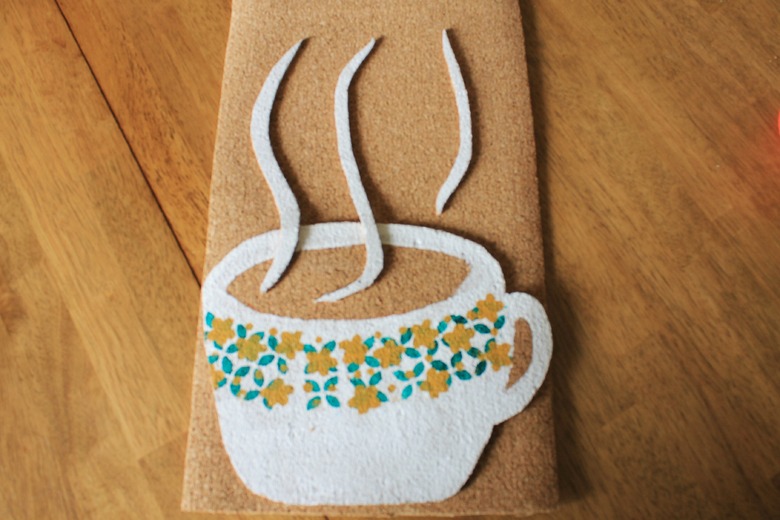Types Of Paint For Use On Corkboard
We may receive a commission on purchases made from links.
The nice thing about corkboard is that it's completely customizable since you can paint it with virtually any color or designs you'd like. Interior latex paint is a good, fairly inexpensive option if you're painting the entire cork surface the same color, while acrylic craft paints are an inexpensive choice if you're painting chevrons or another design and leaving some areas blank. Both paints work equally well, so it could just come down to cost and availability of supplies based on your vision for the finished corkboard. Spray paint also works on cork, but it should be applied only in a well-ventilated area.
Should Corkboard Be Primed?
Should Corkboard Be Primed?
Whether you choose to prime corkboard before painting depends on how you want the finished project to look. Cork absorbs paint, so applying only a coat or two of paint directly on the cork offers the full color of the paint but with the original cork texture visible beneath it.
Prime the corkboard first if you're trying to make it look like something other than cork or if you don't plan to use pushpins in the finished corkboard. Primer plus paint results in a thick finish that may be damaged by using pushpins, meaning the holes will be obvious any time you remove a pin. With minimal paint layers and no primer, the cork still self-heals a bit, similar to how it would without any paint on it.
Preparing for Paint
Preparing for Paint
If the corkboard is brand new and fresh out of a sealed package, it's probably still clean and dust-free, so you may not have to clean it. If it feels dusty, wipe it off with a microfiber cloth or a lint-free cloth and just a touch of water, letting the cork dry completely before painting it.
If the corkboard is in a frame and you don't want to paint the frame, apply painter's tape to the inner edges of the frame to prevent paint from getting on it. Set the corkboard atop a surface you don't mind getting paint on, such as an old worktable. Otherwise, cover the work surface with sheets of newspaper, kraft paper, a plastic drop cloth, or a large, flattened cardboard box. If you're using spray paint, set up a work area outside on a dry, nonwindy day. Make sure the work area is away from anything that may otherwise get overspray on it and use a tarp or flattened cardboard box to paint atop.
If you're planning a design, such as stripes, or you're using stencils, use painter's tape to create the design layout on the corkboard. In some cases, you may wish to paint the entire corkboard a base color and then let it dry before adding the tape for the design for another color.
Painting the Corkboard
Painting the Corkboard
Paint the corkboard using an appropriately sized brush or low-nap roller depending on how large an area you wish to paint at once. If painting the entire corkboard, a brush or roller several inches across does the trick. If painting stripes, choose an inch-wide paintbrush or a brush that seems appropriate for the width of each stripe. Smaller flat or pointed-tip brushes work well for fine-detail work.
If spray painting, shake the can for a minute or as recommended on the label. Start each burst of spray beyond the edge of the cork and while holding the can about 12 inches from the cork, move your arm in a steady motion to complete each spray, ending beyond the edge of the cork. For any paint type, allow the paint to dry completely between coats if you're using more than one coat. Spray paint goes on thinner than acrylic or latex, so you're more likely to want additional coats with spray paint compared to the others.
